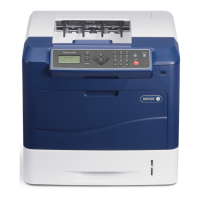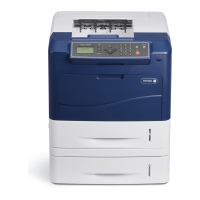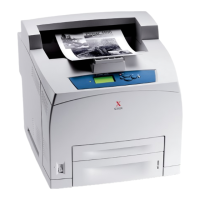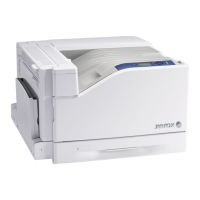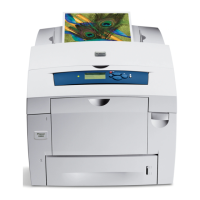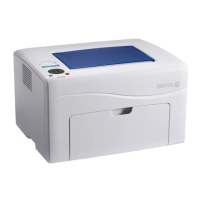5/2011
1-3
Phaser 4600/4620 Printer Service Manual
Service Call Procedures
Service Call Procedures
Revision - Xerox Internal Use Only
Service Call Procedures
This section provides an overview of the steps a service technician should take to service the
printer and attached options. The printer’s diagnostic routines report problems using error mes-
sages and fault codes displayed on the Control Panel, logged in the Service Usage Profile, or
by flashing LEDs. These error indications serve as the entry point into the troubleshooting pro-
cess. System problems not directly indicated by or associated with an error message or fault
code are covered in Section 6, General Procedures. Print-quality problems are covered in Sec-
tion 3, Image Quality.
The steps listed here are a guide for performing any service on this printer. If you choose not to
use these steps, it is recommended that you start at the appropriate troubleshooting procedure
and proceed from there. When servicing the printer, follow the safety measures detailed in the
Service Safety Summary section.
1. Identify the problem.
• Verify the reported problem does exist.
• Check for any error codes and write them down.
• Print normal customer prints and service test prints.
• Make note of any print-quality problems in the test prints.
• Make note of any mechanical or electrical abnormalities present.
• Make note of any unusual noise or smell coming from the printer.
• Print a Usage Profile, if the printer is able to print.
• View the Engine Error and Jam Histories under the Tools menu.
• Verify the AC input from the wall outlet is within specifications.
2. Inspect and clean the printer.
• Follow the cleaning instructions.
• Verify that the power cord is in serviceable condition.
• Restart the printer to check if the error reoccurs.
3. Find the cause of the problem.
• Use the troubleshooting procedures to find the root cause of the problem.
• Use Service Diagnostics to check the printer and optional components.
• Use the Wiring Diagrams and Plug/Jack Locator to locate test points.
• Take voltage readings as instructed in the troubleshooting procedure.
4. Correct the problem.
• Use the Parts List to locate a part number.
• Use the Repair procedures to replace the part.
5. Final Checkout
• Test the printer to verify the problem is corrected and no new problems arose.
Accessing Engine Fault History
Listed below are three ways in which you can access fault history records.
1. Print (if possible) the Error Message report from the Troubleshooting menu. The error
history is listed on the report.
NOTE: Error and fault code definitions of the codes appear in Section 2.
2. If the printer is connected to a network and has a TCP/IP address, view the printer’s web
page using a web browser.
a. Open a web browser.
b. Enter the printer’s IP address as the URL.
c. Select Support --> Troubleshooting --> Diagnostics Logs and the fault history
displays.

